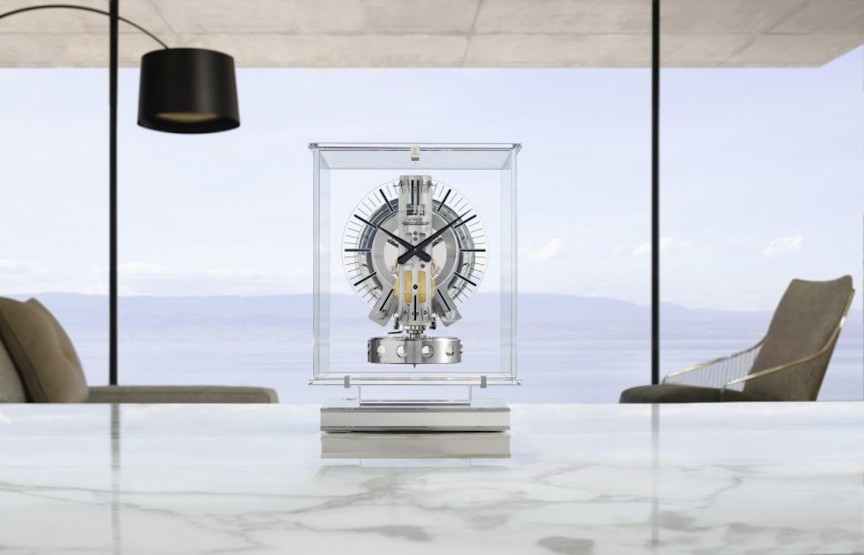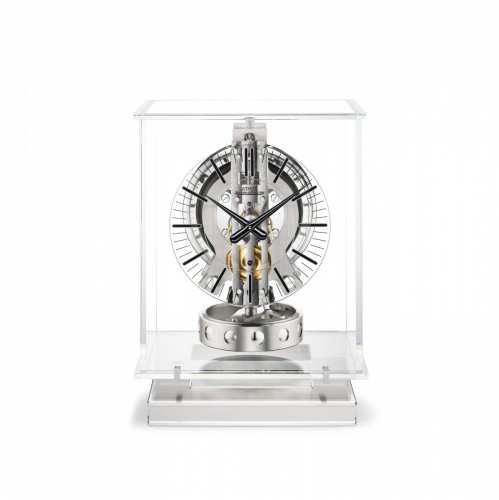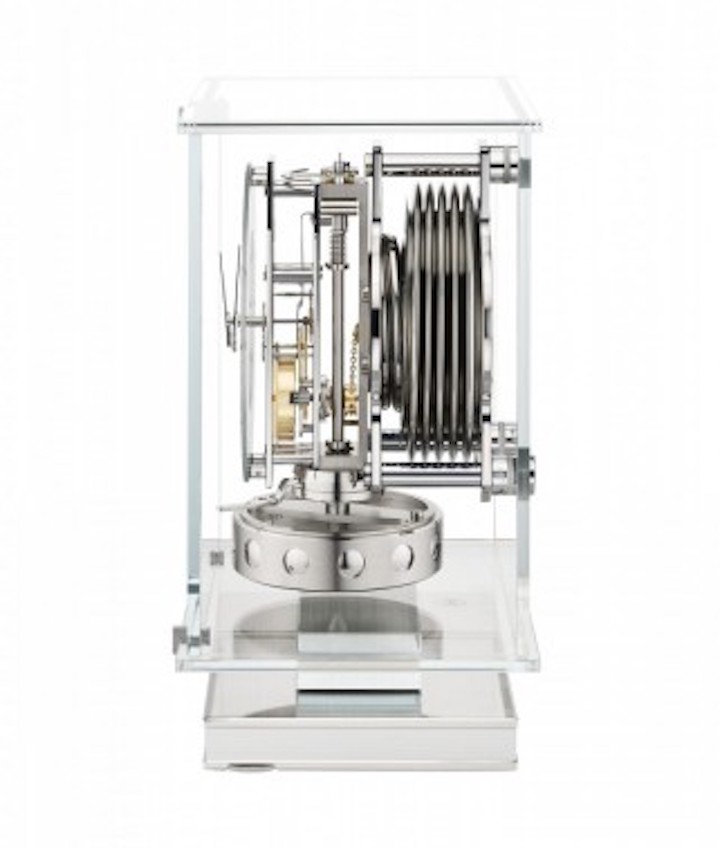
Jaeger-LeCoultre Atmos Transparente clock.
There may not be any better timepiece to reflect the words “totally transparent” than the new Jaeger-LeCoultre Atmos Transparente. The stunning clock with crystal clear cabinet made of anti-reflective glass, is a beautiful statement in open air and mechanics. The Art Deco style clock that runs on air features minimalistic hour markers and hands.
We have written about the Jaeger-LeCoultre Atmos clock before, and have even visited the workshops. This is the almost-miraculous clock that is powered by slight changes in temperature. The simple mechanism was first invented by Jean-Léon Reutter in 1928 and Jaeger-LeCoultre brought it to the world in the form of the Atmos clock in the 1930s.

Jaeger-LeCoultre Atmos Transparente clock has an almost Art-Deco style thanks to the geometric design.
The Atmos runs constantly thanks to a mix of gases hermetically sealed inside a capsule. The gases expand (and therefore swell the bellows of the accordion) when the temperatures rise, and contract when they fall. Just a single degree of temperature change provides the clock with enough energy to run for two days. The gear trains require no oil — allowing for a stunning autonomy that is unparalleled in today’s timekeeping world.
From every angle, the 217-part Jaeger-LeCoultre Caliber 563 movement is visible. From the front, the clock dial features bold stick indexes. A round within a square, the geometry of the clock offers a soothing aesthetic. It retails for $9,450.

The mechanics of the Jaeger-LeCoultre Atmos Transparente clock are visible from the side.
This new version with rectangular case and sharp edges may be slightly reminiscent of the 2016 Atmos 568 designed by Marc Newson. That clock, though had more of a rounded-corners cube shape. This one is bolder in motif.
History of the Atmos and how it works
A wonderful object of art, the Atmos clock was the result of a quest to develop a clock that could run for several centuries without requiring external intervention. The early Atmos clocks were powered by changes in air pressure that would affect a column of mercury inside the clock and that would, in turn, power the mainspring. However, in 1939, mercury was no longer allowed to be used, so Jaeger-LeCoultre turned to capsules or tubes of gas (ethyl chloride) that, when temperatures increase or decrease, expand or contract and trigger winding of the clock’s mainspring.
Today, essentially, the clock mechanism is driven by infinitely small successive changes in temperature. The hermetically sealed capsule is sensitive to tiny degrees of temperature change. The clock’s mainspring then winds the barrel with each atmospheric fluctuation.
Ahead of its time, the environmentally friendly clock was gifted by the brand to certain presidents and socialites, including President John F. Kennedy, President Ronald Reagan, Sir Winston Churchill, General Charles De Gaulle, Pope John Paul II, and others. The clocks are all made in Jaeger-LeCoultre’s Le Sentier workshops and are tested extensively before being sold.





